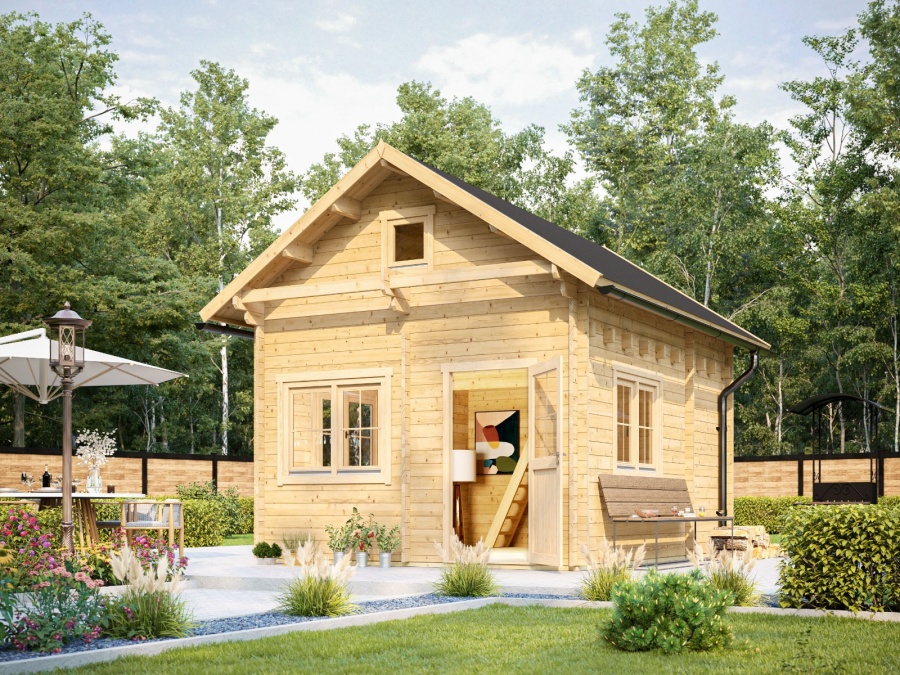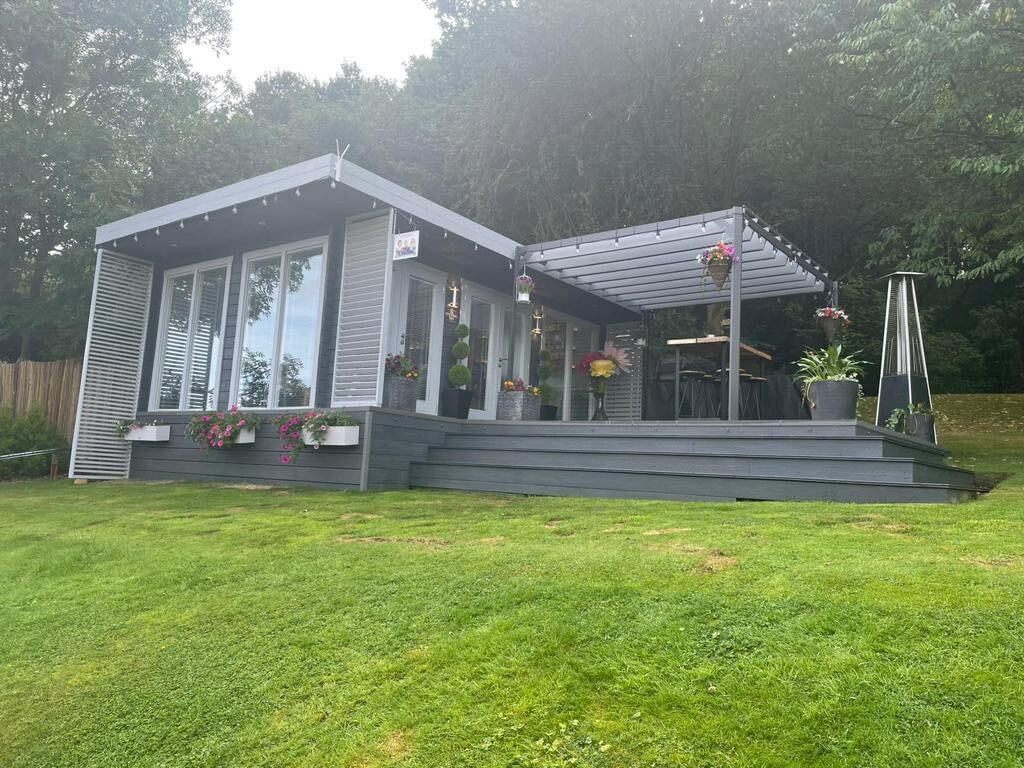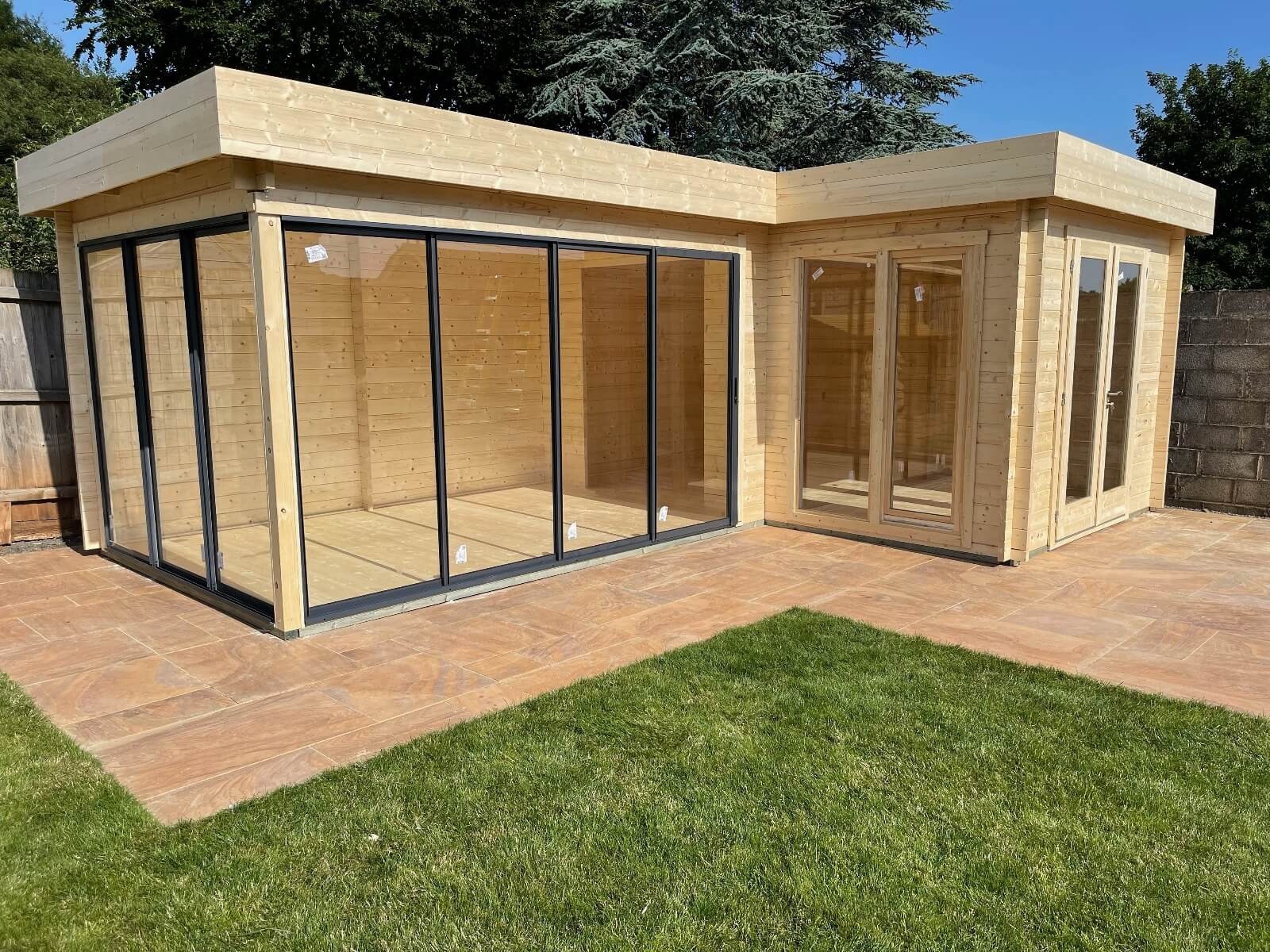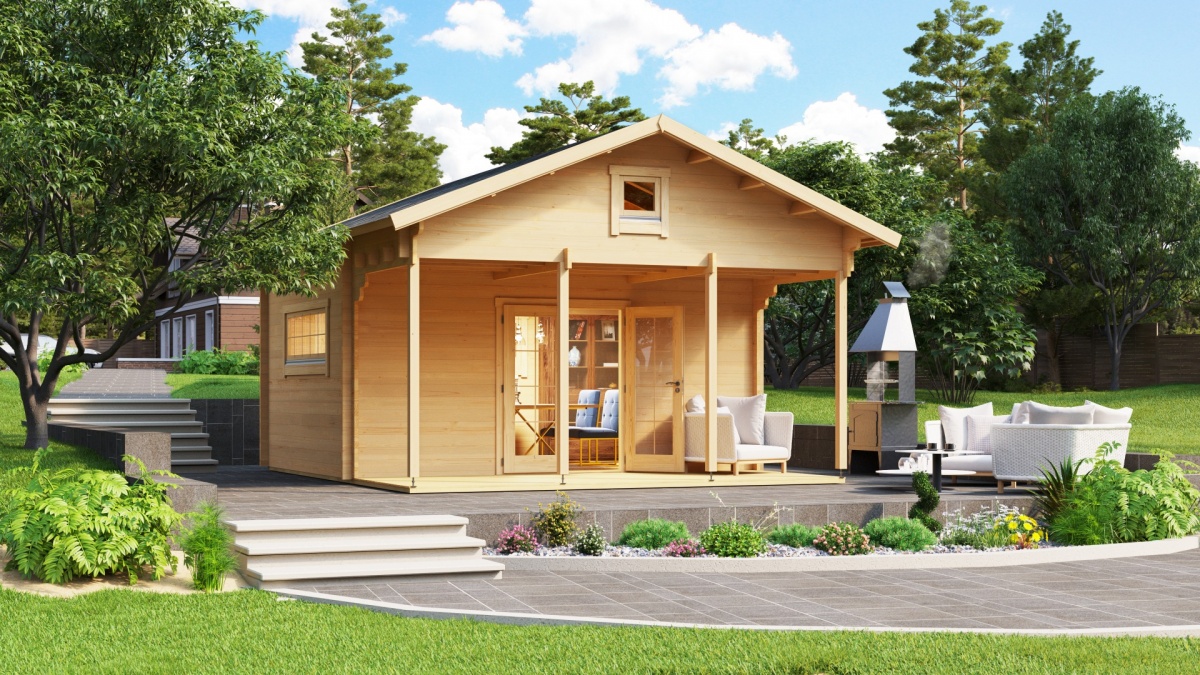
Building a Log Cabin Base
Nowadays, people appreciate that log cabins are stylish, easy on the wallet, and can be built rapidly. Log cabins have been around for hundreds of years because they are reliable and practical.
Logs used for cabin construction vary in type - typically cedar, pine, or timber - but other hardwoods like oak may be used as well.
The logs are usually treated and stacked one on top of the other to create a snug fit which helps keep out wind and rain.
Additionally, chinking material is placed between the gaps to ensure a tight seal.
Several types of roofing materials may also be used in log cabin construction, such as wood shingles, metal sheets or asphalt shingles to protect against weather damage.
They often feature exposed log walls, giving them a cosy feel while at the same time providing insulation from outside temperatures - making them great places to spend time during hot summer days or cold winter nights.
Furthermore, they require minimal maintenance compared to traditional homes, which makes them ideal for those looking for an easy-to-upkeep dwelling.
If you're thinking of building a log cabin base, this post will give you an overview of the process, from choosing the right location site to planning permissions for your cabin.

Choosing the Right Location
There are several factors to consider when choosing a location for a log cabin:
Accessibility
Consider the ease of access to your log cabin. You'll want to choose a location that is easily accessible by car, especially if you plan to use your log cabin as a vacation home or rental property.
You'll also want to consider the proximity of amenities such as grocery stores, hospitals, and other services.
Property size and zoning
Before you begin construction on your log cabin, take into account the size of the land where you'll be building it.
Make sure to verify that there's enough space, not only for the cabin itself but also for any other structures or activities you want to have onsite.
Additionally, look into local zoning laws and make sure that a log cabin is permitted to be built in that location.
Natural surroundings
Consider the natural surroundings of the property where you want to build your log cabin. You may want to choose a location with beautiful views, access to outdoor activities, or a peaceful and secluded setting.
Future plans
Consider any future plans you may have for the property, such as expanding the log cabin, adding additional structures, or selling the property. You'll want to choose a location that is suitable for these plans.

Make Sure That the Base is Level
Making sure your log cabin base is level is a crucial step when constructing a log cabin. Follow these steps to complete this task and get ready for the next phase of construction:
Mark the location of the log cabin
Use stakes and string to mark the log cabin's location on the ground. This will enable you to have an accurate visual of its size, shape, and proper positioning with respect to your property.
Measure the ground
Use a level and a measuring tape to measure the ground at various points within the marked area. Make sure to measure both the width and the length of the area to ensure that it is level in all directions.
Adjust the ground
If the ground is not level, you'll need to adjust it. You can do this by adding or removing soil, or by using shims or other levelling materials to raise or lower certain areas.
Install a base
Once the ground is level, you can install a base for your log cabin. This could be a concrete slab, a wood frame, or another type of foundation. Make sure to follow the manufacturer's instructions for installing the base.
Check for levelness
After the base is installed, use a level to ensure that it is level in all directions. If needed, make any necessary adjustments by shimming or adding levelling materials for even more stability.

Choosing the Right Log Cabin Foundation
Choosing the right log cabin foundation is an essential element of the building process. Not only will it provide a strong and dependable base, but it will also serve as support at all times to guarantee, that your log cabin has longevity.
There are several factors to consider when choosing the right foundation for a log cabin. Here are some tips to help you make the best decision:
Size and weight of the log cabin
Larger and heavier cabins will require more robust foundations to support their weight.
Type of log cabin you are building
Different types of log cabins, such as handcrafted or kit cabins, may require different foundations.
Slope and condition of the land
Take into account the slope and condition of the land where the log cabin will be built. A sloping site may require a more complex foundation, such as a terraced foundation, to provide stability.
Budget
Unlike garden rooms, log cabins tend to be more expensive. When it comes to building your log cabin's foundation, there is a range of materials available at various price points.
It pays off to carefully consider the quality, durability and energy efficiency – all factors that significantly influence budgets for projects like this.
Take some time to think about how much you're willing to spend before making any decisions.
Professional advice
Seek the advice of a professional builder or engineer, who can help you determine the best foundation for your specific needs and circumstances.

Does a Log Cabin Need a Concrete Base
Yes, log cabins usually need a concrete type of base when being built, as this base provides strength and stability to the log cabin’s structure.
Concrete bases are the preferred type of foundation for log cabins because they can span wider distances than other foundations, such as gravel or sand.
Concrete also does not settle over time like these other materials can, meaning it can provide long-term structural support for log cabins.
Furthermore, concrete bases create an impermeable layer between the ground and the log walls of the log cabin; this helps keep moisture from making its way into any part of the log cabin structure.
When installing a concrete base for a log cabin, it is important to use a quality product and follow manufacturer instructions closely.
This includes ensuring that the ground is properly levelled before pouring the concrete and ensuring any additional features needed are well integrated into the design - such as insulation boards or damp-proof membranes.
Once poured, consider adding additional reinforcement, such as steel mesh to increase strength if necessary - particularly if you plan on having heavy equipment such as hot tubs or heavy furniture inside your log cabin.
Finally, once your concrete base has cured completely (this can take several weeks, depending on weather conditions), you'll be ready to start building your log cabin.
With proper planning and installation of your concrete base in place beforehand, you'll be able to rest assured, knowing that your log cabin will have strong support for years to come!
Do You Need a Planning Permission?
In Ireland, you may need planning permission to build a log cabin, depending on the size and location of the cabin.
According to the Irish Planning and Development Act, 2000, planning permission is generally required for any development that involves the construction of a new building or the change of use of an existing building.
There are some exceptions to this rule.
For example, if you are building a log cabin that is less than 25 square meters in size and is being used for ancillary purposes (such as a garden shed or workshop), you may not need planning permission.
However, you should check with your local planning authority to confirm whether or not you need permission.
If you do need planning permission, you will need to submit an application to your local planning authority, along with any required documents and fees.
The planning authority will review your application and may approve it, approve it with conditions, or refuse it.
It is generally advisable to get planning permission before starting any construction, as a building without permission can result in enforcement action being taken against you.
Conclusion
Before starting to build your dream log cabin, make sure you have informed yourself about all the important parts that go into it.
This can be a wonderful addition to your life if done correctly. A log cabin that is built well from the ground up will last for decades.
If you have more questions about log cabins, feel free to contact us!


